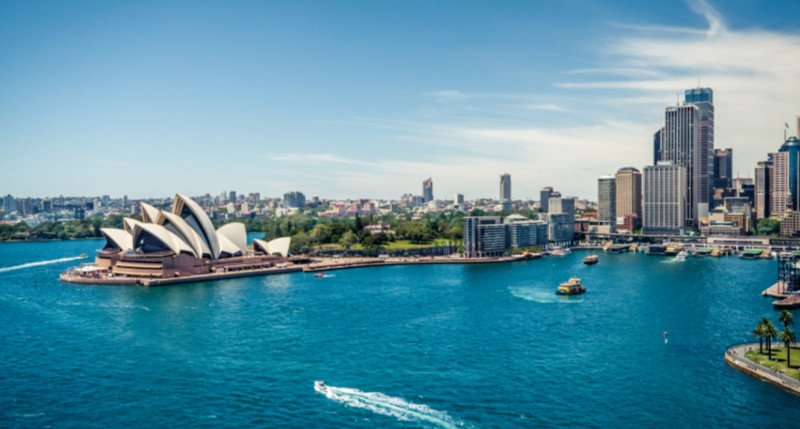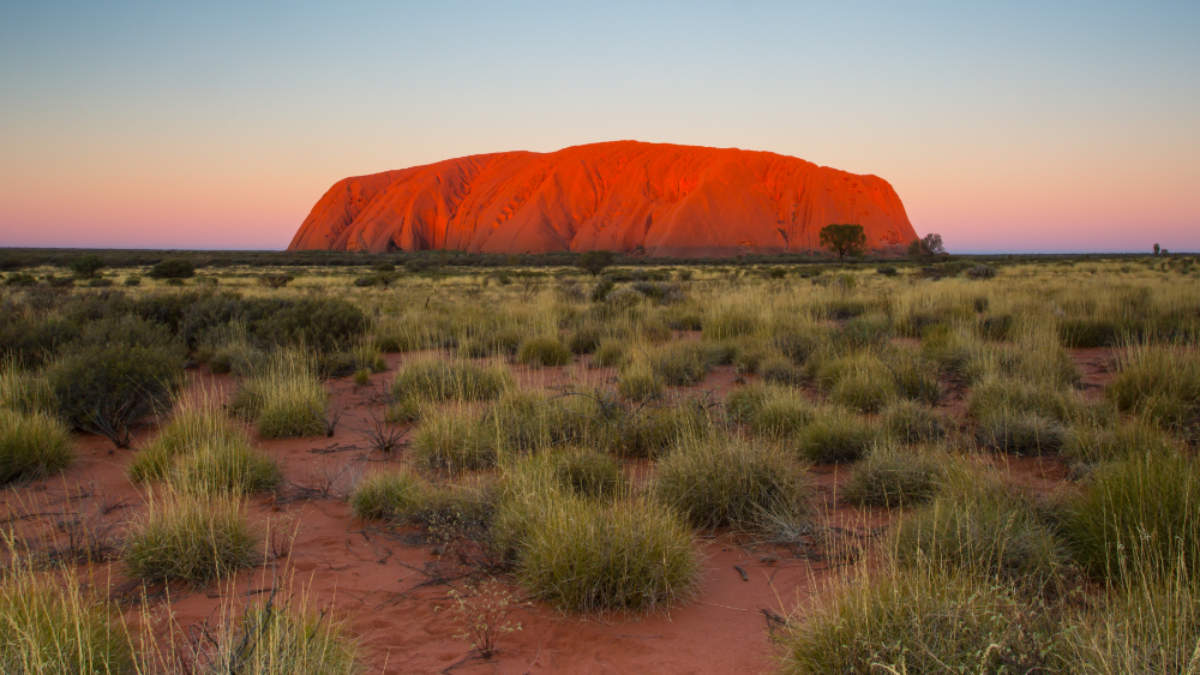Australia is widely regarded as one of the best places to retire to and attracts large numbers of Brits looking to retire Down Under. Australia is the fourth most popular destination for UK residents looking to retire abroad, with Spain, France and the US topping the list according to a survey by MGM Advantage.
Retiring to Australia is more straightforward than some destinations, and you can transfer your private or personal pension as well as receive the state pension. Settling permanently Down Under, however, can be expensive if you don’t have relatives resident in Australia nor quality for one of the subclasses of Australian visa.
But with careful planning and reasonable assets, you can be enjoying the famed Australian weather and laid-back attitude when you retire to Australia.
Why you should retire to Australia?
The obvious benefits of retiring Down Under are easy to spot: amazing weather, common language and lower cost of living.
Australian weather is far warmer than the UK, with an average temperature of 17oC compared to an average of just 9oC in the UK. Temperatures can soar in the summer, with coastal areas hitting highs of 50oC, but winters are mild compared to the UK. According to a survey by HSBC in association with YouGov, around 27% of expat Brits cite a better climate as the main reason for moving abroad – far more than the average of 12% for expats of other countries.
Australia is a stable, safe country with low levels of crime. It has a thriving expat community, and many are retired – with 14% of expats classifying themselves as retired according to research by HSBC. One third of expats are aged over 55, and many expats are drawn to Australia due to its relaxed culture. According to HSBC, 43% of expats move abroad to improve their quality of life.
Housing, healthcare and the cost of living are all attractive if you’re planning to retire to Australia. While housing is mostly a rental market, property isn’t expensive especially if you’re willing to live outside of city centres. Australia’s public healthcare system – Medicare – is widely viewed as one of the best in the world, though there’s limited access for non-residents.
For many people looking to retire to Australia, the chance to live with relatives who have previously moved and settled in Australia is a big draw. There are specific visas for relatives hoping to retire Down Under and be with loved ones.
Interested in retiring to Spain? Read our guide Retiring to Spain: a guide to retiring abroad.
Retirement visa Australia – what you need to know
There are various retirement and relatives visas available for those looking to retire to Australia. There are two retirement-specific Australian visas and several relative-specific visas that you can apply for. Requirements are strict and can be steep in terms of financial commitment.

Standard Retirement Visa – This is the less restrictive visa to apply for if you’re looking to retire to Australia, but it does not give you permanent residency, which means you won’t be able to access Medicare, for example. To apply for a Standard Retirement Visa, you should be aged over 55 and be free from dependents moving with you, apart from your immediate spouse. You’ll also need to demonstrate that you can financially support yourself and have no criminal convictions. The Standard Retirement Visa is valid for an initial four years, then renewed every 2-4 years on a rolling basis.
Permanent Retirement Visa – This is a type of investor visa, and requires significant capital and income. As the with the Standard Retirement Visa, you’ll need to be over 55, free of dependents apart from your spouse, who can be younger than 55. Depending on the state you are settling in, you’ll need to have between $500,000 AUD (approximately £275,000) and $750,000 AUD (£550,000) in assets and have held these for two years before application. You’ll also need an additional $250,000 AUD (£137,000) and $500,000 AUD (£275,000) for your spouse. You’ll also need to prove an annual income based on capital for investment or pension rights of around $50,000 (£27,500).
There are several other visas that are not retirement-specific and have no investment criteria, which are worth considering if you meet their criteria. Visa requirements can change, so check with the Australian High Commission beforehand.
Parental Category or Contributory Parental Category Visa – If you are a parent of a child who is an Australian citizen, or a permanent Australian resident, who has been living in Australia for at least two years and is able to sponsor your application.
Aged Dependent Relative Visa – If you have a direct relative (child, sibling, uncle, aunt, parent, niece or nephew or step-relative to the same degree) and you are single (never having been married, divorced or widowed). You have to prove that you are dependent on the relative and they will have to sponsor your application.
Remaining Relative Visa – If you and your spouse can prove you have no other direct relatives other than those who are resident or permanently living in Australia, then you can apply to effectively reunite with them. Direct relatives are as defined above.
Carer Relative Visa – If you are looking to provide care for a close relative in Australia who has a long-term or permanent medical condition. There can be long waiting times of up to five years for this visa.
How much does it cost to retire to Australia?
According to Numbeo the cost of living in Sydney as a typical city at the more expensive end of the scale can be quite high – though cheaper than London. You should budget around $1,300 AUD for a single person without rent (that’s around £700). A one-bed apartment outside of Sydney costs around $1,900 AUD (approximately £1,000) per month, with prices increasing the closer you get to the city centre.
Meals cost around $80 AUD for a mid-priced three-course meal for two (around £50) while a beer costs around $8 or £5. Expect to spend around $177 on utility bills excluding broadband (around £100), with broadband adding an extra $70 or £40 per month.

How do I get my pension in Australia?
If you’re successful with your application for an Australian retirement visa, you’ll want to draw on the pension you built up working and living in the UK. When transferring your person or work pension, you’ll need to check that the Australian superannuation fund provider qualifies for HMRC’s overseas pension fund scheme. You can see a full list of Australian providers at HRMC’s web site.
It’s worth considering transferring all your pension fund in one go. It’s usually part of the assets that make up the visa requirement, but there may be a tax incentive that means you can transfer the funds tax-free within six months. Transferring your pension fund has the added benefit of avoiding the challenges of a floating exchange rate, which can negatively impact the value of your pension fund.
The UK state pension itself cannot be transferred. Instead, pension payments are paid into your Australian bank account on a regular basis – usually every three months – with HMRC determining the exchange rate it transfers the funds. The latest government transfers rates can be found at https://www.gov.uk/government/collections/exchange-rates-for-customs-and-vat
How does healthcare work in Australia?
Public health service is called Medicare and depending on your retirement visa, you may have access to it. Medicare is only open to residents, but when you get residency such as those successfully applying for a Permanent Retirement Visa, you can apply for Medicare. Temporary residents such as those on a Standard Retirement Visa do not get access to Medicare.
It’s worth knowing that dental, eye, ear and other medical services such as the cost of ambulances aren’t covered by Medicare, regardless of your residency status. You will need to buy basic medical insurance in addition to using Medicare. There are some reciprocal arrangements with the UK, which usually covers emergency medical treatment only, which will be useful for those on a Standard Retirement Visa.
Best-selling Australia travel guides
Stuck for inspiration? Check out our list of best-selling Amazon products!
- Bain, Andrew (Author)
- English (Publication Language)
- 1104 Pages - 10/08/2021 (Publication Date) - Lonely Planet (Publisher)
- Hardcover Book
- Lonely Planet (Author)
- English (Publication Language)
- Ham, Anthony (Author)
- English (Publication Language)
- 544 Pages - 04/09/2021 (Publication Date) - Lonely Planet (Publisher)
- Summers, Autumn May (Author)
- English (Publication Language)
- 97 Pages - 12/07/2022 (Publication Date) - Independently published (Publisher)
- Lonely Planet (Author)
- English (Publication Language)
- 2 Pages - 06/09/2017 (Publication Date) - Lonely Planet (Publisher)
Last update on 2024-04-09 / Affiliate links / Images from Amazon Product Advertising API
You may be interested in…
This article may include affiliate links to products and services where we may receive a small fee to support the running of this site if you make a purchase or is a sponsored article from one of our select editorial partners providing valuable advice and information to our readers.
































































